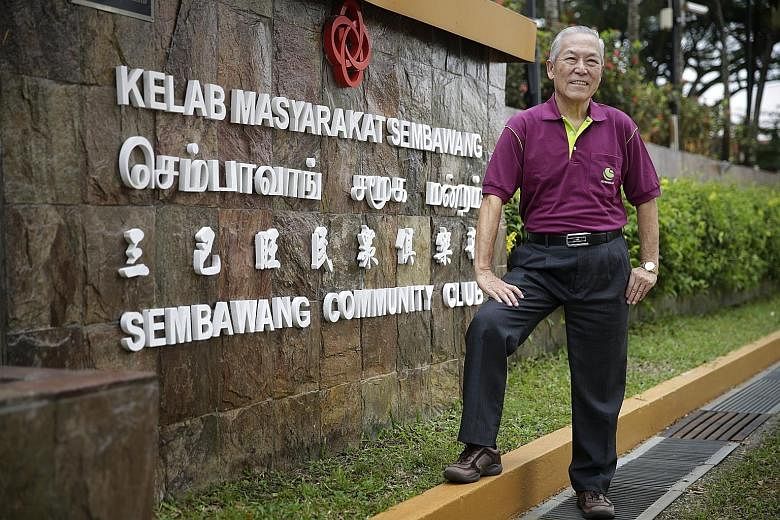As a high school student, Mr Law Shun Yong often played basketball and also helped to organise basketball competitions in his Sembawang neighbourhood.
A few years later, after he became a Chinese language teacher at Ahmad Ibrahim Secondary, he was roped into the Sembawang Citizens' Consultative Committee (CCC). It was the first batch of CCCs to be set up in March 1965, along with those in Nee Soon, Punggol and Serangoon Gardens.
These groups had evolved from goodwill committees which were started to foster good relations and restore trust after the 1964 racial riots. They were often in the news for their activities - Queenstown CCC, for instance, organised a social night this week 50 years ago.
Mr Law was invited by then Sembawang MP Teong Eng Siong to join the CCC in 1967, to help with things like the writing of minutes during meetings. "I agreed without hesitation as I was already helping out... I knew the job was to help villagers," Mr Law, now 72, said in Mandarin.
Meetings were held around a ping pong table in the community centre which had spartan facilities in the 1960s, compared with those now.
Much of Mr Law's work as a grassroots volunteer was looking after the needs of residents in remote villages.
"Our job was to help villagers apply for supply of water, for instance," he said. Other places might not have electricity, lights or roads.
The CCC also served as a bridge between national leaders and the people, helping to publicise national policies or campaigns.
In the late 1970s and 1980s, as kampung dwellers were moved to Housing Board flats in the nearby Yishun New Town, Mr Law and other grassroots volunteers helped to ease the transition.
CCC members were tasked with certifying whether the villagers had engaged in farming, such as growing rambutans or durians, or rearing poultry or pigs, to decide if they qualified for compensation.
They also certified whether those wanting to get a stall in the newly built hawker centres had been bona fide roadside hawkers in the area.
"We were rarely moved (to other CCCs). The CCC was made up of residents of the area, so we know who the hawkers are," said Mr Law who was chairman of the Sembawang CCC from 2002 to 2012, when he retired.
Today, as the group's honorary chairman, he still drops by the community club regularly to chat with staff and see if he can help out.
Long service seems to come naturally to Mr Law, who is still a teacher at Ahmad Ibrahim, which he joined in 1965. He has also served 50 years in the St John's Ambulance Brigade, and holds the rank of assistant chief commissioner.
He even got his wife to join him in doing grassroots work at Sembawang CC - she served for about 35 years in the women's executive committee there - so that they could spend more time together.
Said the grandfather of three: "If my health permits, I will continue to do my part."


